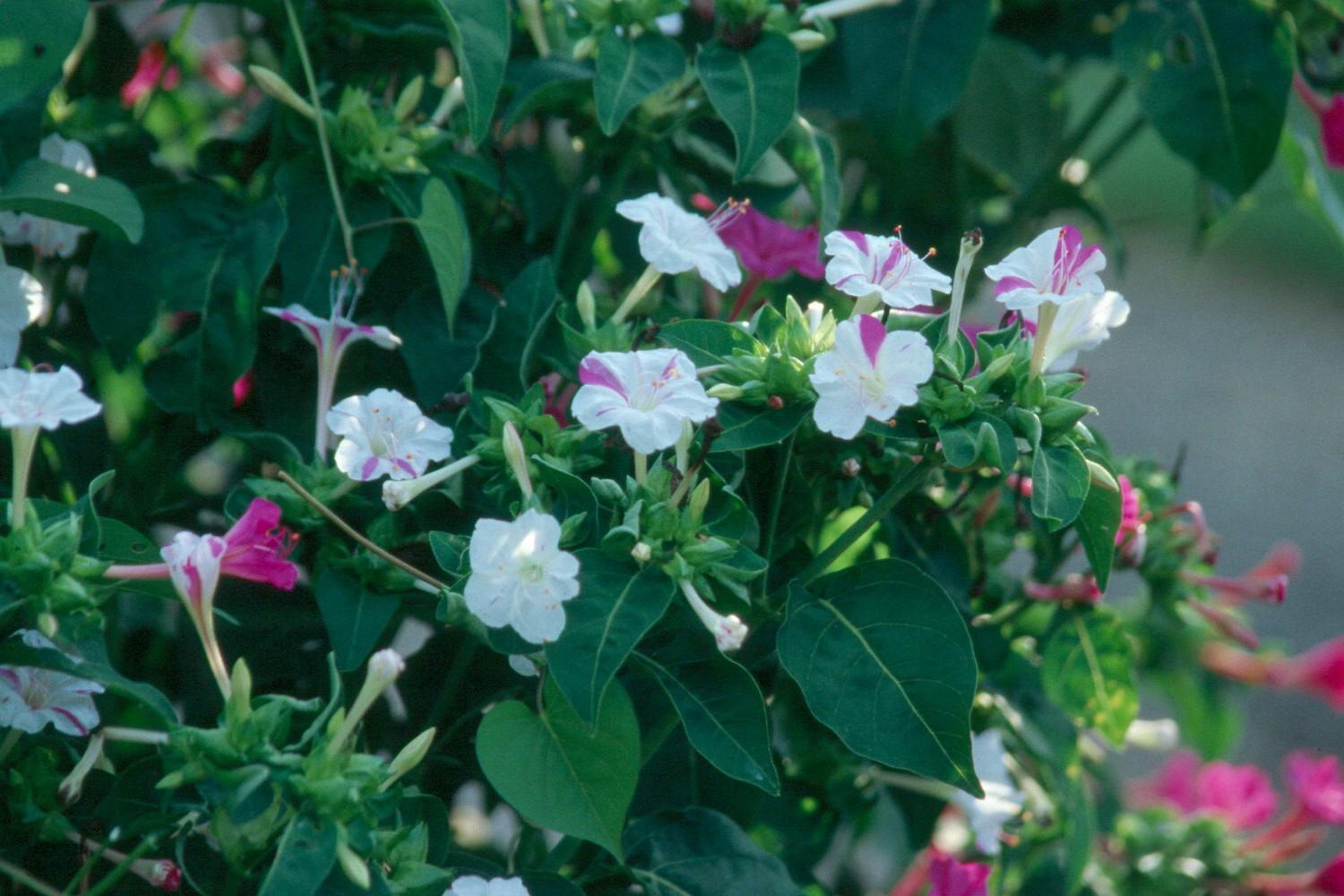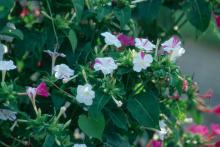Information Possibly Outdated
The information presented on this page was originally released on August 19, 2002. It may not be outdated, but please search our site for more current information. If you plan to quote or reference this information in a publication, please check with the Extension specialist or author before proceeding.
Time to enjoy four o'clocks
By Norman Winter
MSU Horticulturist
Central Mississippi Research & Extension Center
Many people are looking at tired gardens in the late summer and fall, but Miss Ann is a friend near Terry, Miss., who will tell you it's time for Mississippians to enjoy four o'clocks for their beauty and their fragrance.
Many Southerners are familiar with the four o'clock. The red, yellow, white or multi-colored flowers open in the afternoon at 4 o'clock, give or take an hour. The blossoms emit a tantalizing fragrance that makes family and friends want to sit on the porch and talk awhile. This performance lasts almost all night and runs from summer through fall.
The four o'clock is known botanically as Mirabilis jalapa and is also known as Beauty-Of-The-Night and Marvel-of-Peru. Though it is native to Peru, you will swear it has Mississippi in its genes by the way it takes to our climate. It will re-seed and form underground tubers, too. Tubers have been known to weigh 40 pounds in native areas. This prolific nature makes it slightly aggressive, and it needs to be managed.
For best blooming, plant them in full sun in well-drained, fertile soil. I have seen many fine plantings in morning sun and afternoon shade as well. Many recommend this as a flower that will perform in poor soils. This is certainly the case, though the height is usually only in the 2- to 3-foot range. In good soil, the four o'clock becomes a large, shrub-like plant reaching 4 to 6 feet in height and width, so place it accordingly.
The cultural techniques are simple; remove frozen foliage in the fall and add a layer of mulch in colder regions. Since the four o'clock re-seeds with vigor, each spring make it a point to remove the ones you do not want. A little supplemental water during prolonged dry periods keeps the plant looking crisp, though it is very drought tolerant.
The leaf texture and tubular flower form allow it to fit into the tropical landscape as easily as the cottage garden. Grow in front of bananas or upright elephant ears, and use in combination with hibiscus or allamandas in the tropical garden.
In the cottage garden, grow four o'clocks with other drought-tolerant plants like lantana, melampodium and Goldstrum rudbeckia. If growing in morning sun and afternoon shade, one of the best companions is the summer phlox. The most important consideration is to place the four o'clock close to the porch, patio or deck so the family can enjoy its enticing fragrance.
This plant that all Southerners have experienced and loved is harder to find than a four-leafed clover. Although it is commercially produced, the four o'clock is rare at the garden center. They are still sold generically, but there are some regional names around. Flueroselect has introduced one called Red Glow, but it isn't around here yet. It is an easy-to-grow plant, but most likely you will be getting yours from a neighbor or an older gardening friend.
You need to grow this plant again. They are beautiful, fragrant, easy to grow and most importantly of all, will help form lasting memories in your children.



